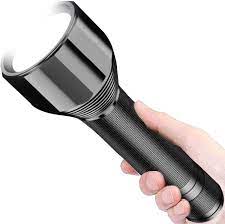Illuminating the Night: Exploring the Evolution and Uses of Torches
This article explores the historical evolution, construction, uses, and advancements of torches, from their ancient origins to modern-day technologies. Discover the significance of torches in various contexts and their continued relevance in illuminating our world.
Historical Evolution of Torches.

Historical Evolution of Torches
Torches have a long and diverse history. The earliest forms of torches were simply sticks or branches wrapped in flammable materials like animal fat or plant fibers. As civilizations advanced, torches evolved to include more sophisticated designs and materials. For example, the Greeks and Romans utilized torches made of wood soaked in pitch. Over time, advancements in technology led to the development of electric torches, starting with carbon arc lamps in the late 19th century and evolving into modern LED torches.

Types of Torches
Today, torches come in various types, each designed for specific purposes and preferences:
a. Traditional Flame Torches
These are the classic torches that use an open flame as the light source. They are often used in outdoor settings, like gardens or pathways, to create a warm and atmospheric lighting.
b. LED Torches
Modern torches predominantly use Light Emitting Diodes (LEDs) as their light source. LED torches are energy-efficient, durable, and provide powerful and focused illumination. They come in a range of sizes and can be compact for easy portability or larger for more intense lighting needs.
c. Headlamps
Headlamps are torches worn on the head, providing hands-free lighting. They are popular for outdoor activities like hiking, camping, or spelunking, allowing the user to have a direct beam of light wherever they look.
d. Rechargeable Torches
These torches are designed to be rechargeable, reducing the need for disposable batteries. They are cost-effective and more environmentally friendly, making them a popular choice for regular use.
e. Solar-Powered Torches
Solar torches use solar panels to charge built-in batteries during the day, providing light at night. They are an eco-friendly option and great for outdoor activities in sunny areas.
Uses of Torches
Torches serve a multitude of purposes across various settings:
a. Emergency Lighting
Torches are essential during power outages and emergencies, providing a reliable light source to navigate and stay safe.
b. Outdoor Activities
Whether you're camping, hiking, or simply stargazing, torches provide the necessary illumination for outdoor adventures.
c. Safety and Security
Torches can enhance safety by illuminating dark areas, acting as a deterrent to potential intruders.
d. Exploration and Adventure
In activities like caving or night trekking, torches are indispensable tools, illuminating the path and ensuring safety.

Choosing the Right Torch
Selecting the appropriate torch depends on your specific needs and preferences. Consider the following factors:
a. Brightness and Range
Evaluate the lumens (brightness) and beam distance of the torch to ensure it suits your intended use.
b. Battery Type and Life
Decide between disposable or rechargeable batteries based on your usage requirements. Consider the torch's battery life to ensure it lasts as long as you need.
c. Size and Portability
Choose a torch size that is convenient for your intended use. Compact torches are ideal for traveling, while larger ones may be better for specific tasks.
d. Additional Features
Some torches come with features like multiple lighting modes, waterproofing, shock resistance, and adjustable focus. Consider these features based on your needs.
Construction and Components
Modern torches, while following the same fundamental principle of producing light through combustion, boast sophisticated construction and components. The primary components of a contemporary torch include:
- Handle: Made of various materials, such as plastic, metal, or wood, providing a grip and allowing for ease of use.
- Fuel Chamber: A compartment to store fuel, typically oil or gas, that is designed for controlled combustion and continuous flame.
- Wick: Absorbs the fuel from the fuel chamber, aiding in the consistent and regulated burning of the torch.
- Combustion Chamber: The area where the fuel-soaked wick burns, producing the desired light.
- Flame Guard: A protective casing or screen that shields the flame from wind or other external factors, ensuring a steady burn.
Advancements and Future Trends
Recent advancements in technology have significantly impacted torches. LED-based torches have become increasingly popular due to their energy efficiency, longevity, and brightness. They offer a viable alternative to traditional flame-based torches, reducing the risk of accidents and providing a more sustainable lighting solution.



